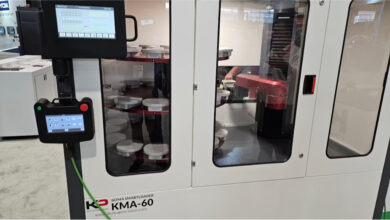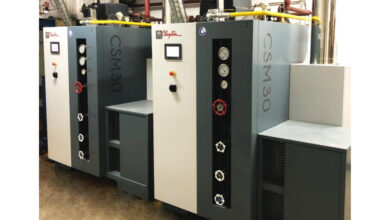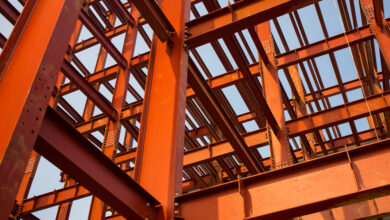Building Your Podcast Studio

Creating a professional podcast studio requires meticulous planning and investment in the right equipment. From microphones to soundproofing, every detail matters in achieving high-quality audio. But what truly sets apart a good podcast studio is the attention to post-production editing and mastering, ensuring your content stands out in the crowded podcasting landscape. Stay tuned to discover the essential elements and tips for building a podcast studio that elevates your content to the next level.
Selecting the Right Microphone
When choosing a microphone for your podcast studio, it is vital to take into account the specific requirements of your recording setup and the type of content you will be creating. Proper microphone placement and recording techniques are essential factors to keep in mind. The microphone you choose should align with your recording environment, whether it’s a quiet space or a room with potential background noise.
Moreover, selecting the right microphone accessories can enhance the quality of your recordings. Pop filters, for instance, are valuable accessories that help reduce plosives and sibilance, resulting in clearer audio. These filters are particularly useful if you tend to speak close to the microphone or if your content involves a lot of vocal elements.
Choosing Audio Interface and Mixer
Selecting the appropriate audio interface and mixer is vital for optimizing the sound quality and control in your podcast studio setup. When choosing these components, consider factors such as equipment compatibility and budget constraints. Make sure that the audio interface and mixer you select are compatible with your microphones and recording devices to avoid technical issues during podcast production.
Look for options that offer a user-friendly interface, making it easy for you to adjust settings and levels as needed. A straightforward interface can save you time and frustration during recording sessions. Moreover, consider the advanced features that different audio interfaces and mixers offer. Depending on your podcasting needs, you may benefit from features such as built-in effects, multiple input channels, or software integration capabilities.
Balancing your requirements with your budget is essential when making this decision. While advanced features can enhance your recording capabilities, it’s important to choose equipment that fits within your financial constraints. By carefully evaluating equipment compatibility, user-friendliness, advanced features, and budget considerations, you can select the right audio interface and mixer for your podcast studio.
Essential Recording Software
To guarantee efficient podcast production, acquiring essential recording software is crucial for your podcast studio setup. When selecting recording software, consider the recording environment and the ability to control audio levels. Look for software that offers features to enhance the quality of your recordings, such as noise reduction and audio editing tools.
For podcast formats that involve guest interviews, it is vital to choose software that allows for easy integration of multiple audio sources. Look for recording software that enables seamless recording of remote interviews, with options for individual audio tracks for each participant. This ensures clarity and quality in the final production.
Some popular recording software options for podcasting include Audacity, GarageBand, Adobe Audition, and Hindenburg Journalist. Each offers unique features to cater to different podcasting needs. Consider the complexity of your podcast format and the level of editing required when selecting the most suitable recording software for your setup.
Soundproofing and Acoustic Treatment
Effective soundproofing and acoustic treatment are essential components of a well-equipped podcast studio. To guarantee high-quality audio recordings, it is important to minimize external noise interference and control the room’s acoustics.
When considering soundproofing techniques, start by sealing any gaps or cracks in windows, doors, and walls to prevent sound leakage. Adding heavy curtains or soundproofing foam to the windows can further reduce outside noise.
Acoustic panels are also essential for controlling reverberations within the room. Proper acoustic panel placement is key; strategically position panels at reflection points on the walls to absorb excess sound waves and improve audio clarity. Experiment with panel placement to find the best configuration for your specific room size and layout.
Proper Lighting Setup
Achieving ideal lighting in your podcast studio is vital for creating a visually appealing and professional setting for your recordings. When setting up your lighting, consider the placement to avoid harsh shadows and guarantee a well-lit environment.
Proper lighting placement can help eliminate unwanted shadows, providing a clear and polished look to your video recordings. Moreover, paying attention to the color temperature of your lights is essential to maintain consistency and create the desired ambiance for your podcast studio.
To further enhance your lighting setup, consider using diffusion techniques to soften the light and avoid harsh glares or reflections. Diffusers can help create a more flattering light on your face or background, making your recordings more visually pleasing. Experiment with different diffusion materials to find the right balance between softness and brightness for your studio setup.
Furniture and Studio Layout
Consider the arrangement of furniture and the layout of your podcast studio to optimize functionality and create a conducive environment for your recordings. Start by selecting ergonomic chairs that provide comfort and support during long recording sessions. Opt for chairs that promote good posture and reduce the risk of strain or discomfort. Moreover, make sure that your desk height is set at an ideal level to prevent any unnecessary strain on your arms or wrists while working.
When arranging the furniture in your studio, prioritize functionality and ease of movement. Position your desk in a way that allows for easy access to your equipment and promotes a smooth workflow. Keep in mind the placement of microphones, computers, and any other necessary tools within arm’s reach to avoid disruptions during recording sessions.
A well-thought-out studio layout can enhance your productivity and overall recording experience. By investing in ergonomic chairs and setting your desk at the ideal height, you can create a comfortable and efficient workspace for your podcasting endeavors.
Cable Management Solutions
For a streamlined and organized podcast studio setup, implementing effective cable management solutions is crucial for maintaining a tidy and efficient workspace. Cable organization and routing play a key role in ensuring that your studio remains clutter-free and visually appealing. Cord management and wire concealment are essential aspects of maintaining a professional and polished look in your podcasting space.
There are various cable management solutions available to help you keep your cords organized and out of sight. Cable sleeves or wraps can bundle wires together neatly, preventing them from tangling and creating a mess. Cable clips or organizers can be used to secure cables along the edges of desks or walls, keeping them easily accessible yet hidden from view. Cable trays or boxes offer a centralized location to store excess cords and power strips, reducing the risk of tripping hazards and promoting a clean studio environment. Prioritizing cable management not only enhances the aesthetics of your podcast studio but also contributes to a more functional and productive workspace.
Monitoring and Headphones
To guarantee excellent audio quality and precise monitoring during podcast recordings, choosing the right headphones is essential for podcasters. When selecting headphones for your podcast studio, consider features like wireless options for freedom of movement and budget-friendly choices. Opt for headphones with noise-canceling capabilities to block out distractions and make sure a clear audio monitoring experience. Moreover, prioritize a comfortable fit to wear during long recording sessions without causing discomfort.
Wireless headphones provide flexibility and convenience, allowing you to move around the studio without being tethered to your recording equipment. They also help minimize cable clutter, contributing to a more organized workspace. Budget-friendly options are available without compromising on sound quality, making them ideal for podcasters looking to invest wisely in their equipment.
Noise-canceling headphones are essential for blocking out background noise, ensuring that you can focus entirely on your podcast recording. Finally, selecting headphones with a comfortable fit is crucial for extended wear, enabling you to concentrate on creating engaging content without distraction.
Podcast Editing and Post-Production
Efficient podcast editing and post-production are essential steps in ensuring a polished and professional final product for your audience. Once you have recorded your podcast episodes, the editing process begins. This involves trimming out any mistakes, adding music or sound effects, and guaranteeing a smooth flow throughout the episode.
Audio mastering is another vital aspect of post-production. This step focuses on enhancing the overall sound quality of your podcast. It involves adjusting levels, equalization, and compression to make sure that your podcast sounds clear and balanced across different devices.
After editing and mastering, the final step is episode distribution. This involves uploading your podcast episodes to hosting platforms like Spotify, Apple Podcasts, or Google Podcasts. Make sure to add relevant metadata such as episode titles, descriptions, and tags to optimize discoverability.
Conclusion
To summarize, constructing your podcast studio necessitates thoughtful consideration of equipment and studio setup to guarantee high-quality audio production.
By choosing the appropriate microphone, audio interface, and recording software, as well as addressing soundproofing, lighting, and furniture arrangement, you can establish a professional and functional workspace.
Adequate monitoring and post-production editing are essential for achieving a polished final product.
Keep in mind, a well-equipped and well-designed studio, like the ones at realnewspr.com/services/podcasting/, is essential for creating engaging and compelling podcasts.





